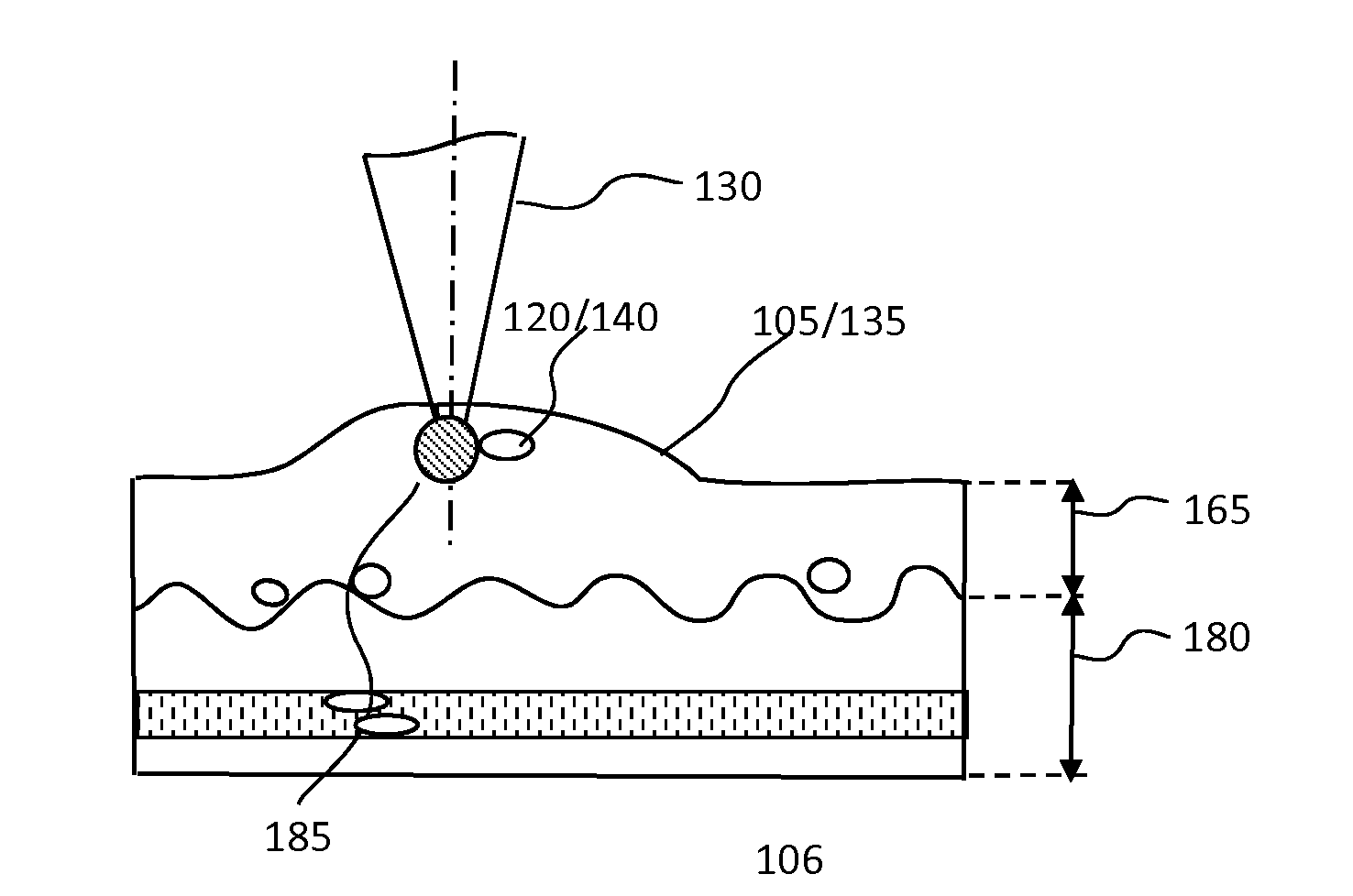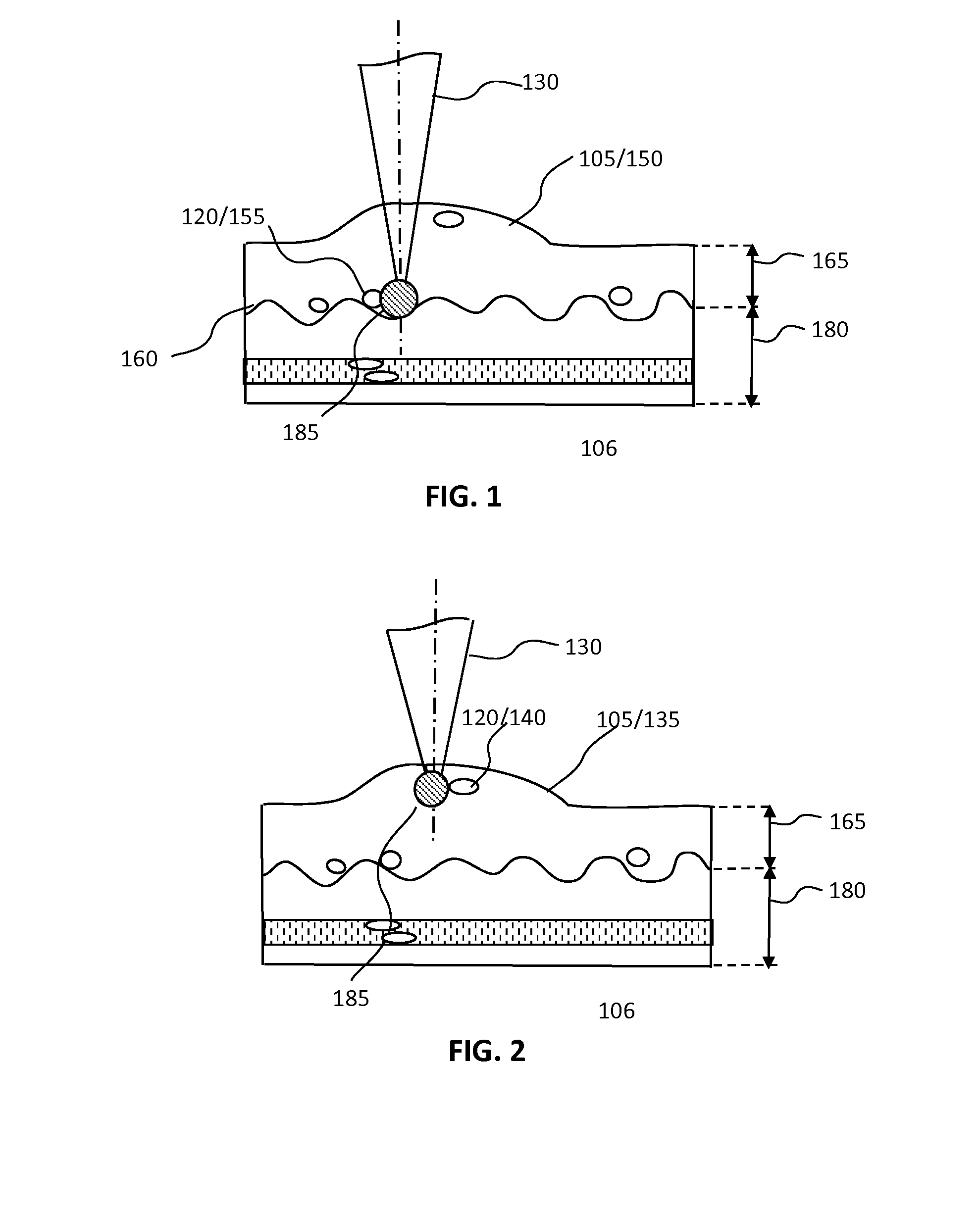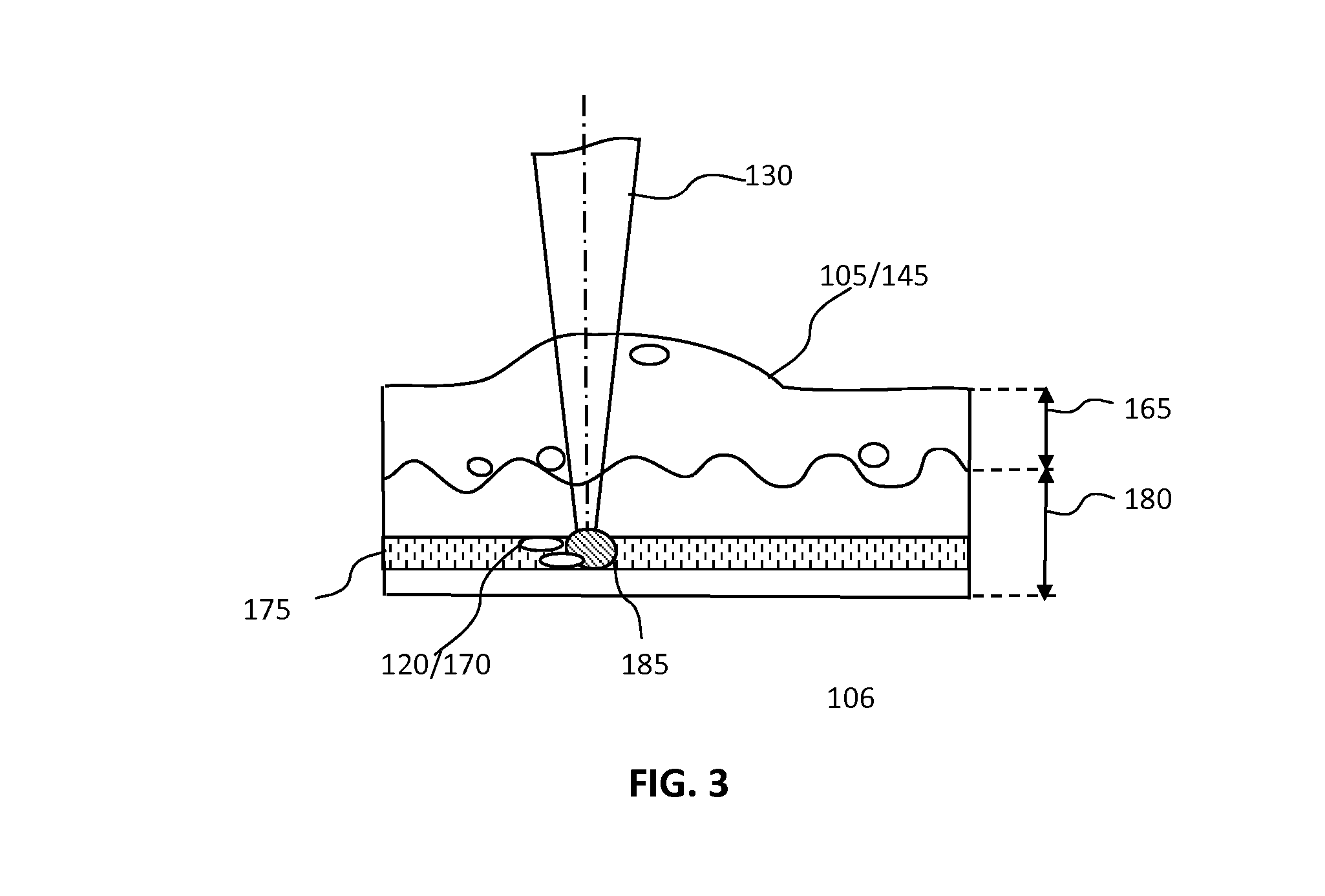Methods to Alter Damaged Mammalian Skin using a Multiphoton Processes
a multi-photon and process technology, applied in the field of methods and apparatus for altering damaged mammalian skin, can solve the problems of difficult application of cooling systems, difficult recovery time of 1 to 2 weeks, and pain of laser procedures, so as to reduce scarring, reduce pain, and reduce the damage of damaged skin
- Summary
- Abstract
- Description
- Claims
- Application Information
AI Technical Summary
Benefits of technology
Problems solved by technology
Method used
Image
Examples
Embodiment Construction
[0024]The preferred embodiments of the present invention will now be described with reference to the drawings. Identical elements in the various figures are identified with the same reference numerals.
[0025]Reference will now be made in detail to embodiments of the present invention. Such embodiments are provided by way of explanation of the present invention, which is not intended to be limited thereto. In fact, those of ordinary skill in the art may appreciate upon reading the present specification and viewing the present drawings that various modifications and variations can be made thereto.
[0026]The Femtosecond Laser
[0027]The laser beam may be tightly focused to a small sized focal region, or spot, so as to achieve an ultrahigh intensity in a vicinity of the organelle to be altered, and, thereby, alter the organelle. Preferably, the laser will be a femtosecond laser with: a relatively low energy, for example in the range of 2 to 5 mJ / pulse; a pulse duration in the range of 50 to...
PUM
 Login to View More
Login to View More Abstract
Description
Claims
Application Information
 Login to View More
Login to View More - R&D
- Intellectual Property
- Life Sciences
- Materials
- Tech Scout
- Unparalleled Data Quality
- Higher Quality Content
- 60% Fewer Hallucinations
Browse by: Latest US Patents, China's latest patents, Technical Efficacy Thesaurus, Application Domain, Technology Topic, Popular Technical Reports.
© 2025 PatSnap. All rights reserved.Legal|Privacy policy|Modern Slavery Act Transparency Statement|Sitemap|About US| Contact US: help@patsnap.com



